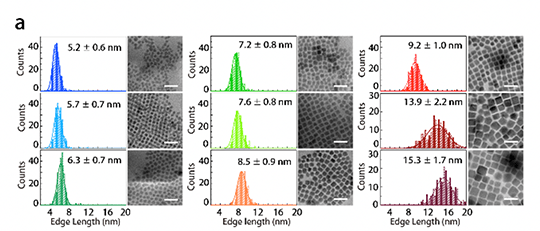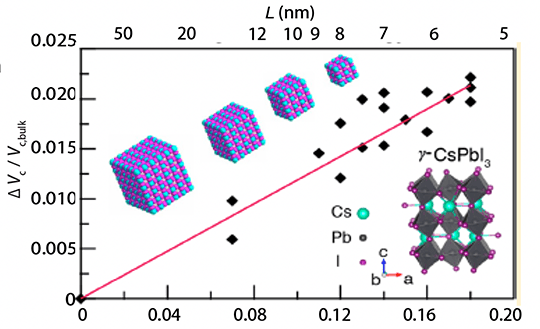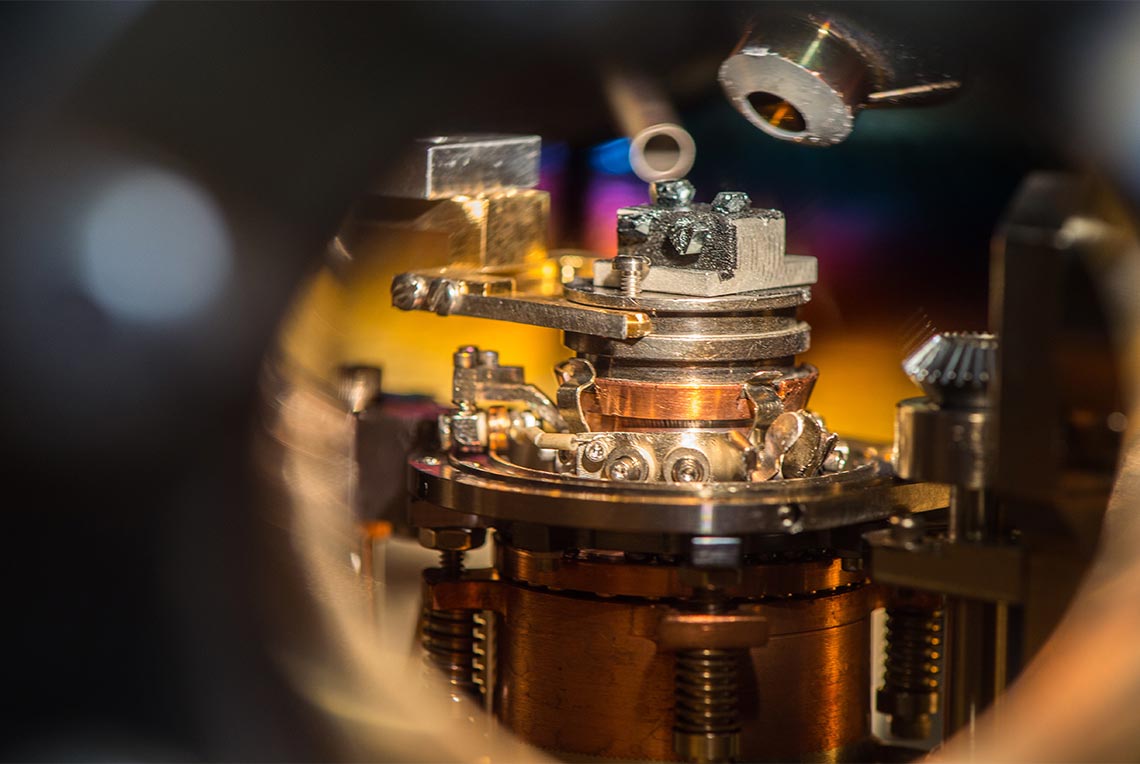Negative Surface Energy for Stabilization
Dec. 18, 2019
The quantum confinement properties enabled by colloidal nanocrystal (NC) synthesis not only offer the opportunity to tune the light emission wavelength but can also be used to understand basic properties fundamental properties.
Scientific Achievement
We found that the enhanced phase stability of CsPbI3 compared to their thin-film counterparts results from a negative surface energy stabilization that varies from −3.0 to −5.1 eV nm–2 for ligated CsPbI3 nanocrystals.
Significance and Impact
The CsPbI3 NCs adopt the perovskite (over the non-perovskite orthorhombic) structure with improved stability over thin-film materials and have interesting photovoltaic (PV) and LED applications.
Research Details
- CsPbI3 nanocrystals with narrow size distributions were prepared to study the size-dependent properties.
- Using Synchrotron X-ray measurements, we determined that the size-dependent lattice constants systematically vary 3% across the size range, with unit cell volume increasing linearly with the inverse of size to 2.1% for the smallest size.
Related People
Michael Toney
University of Colorado
Peter Sercel
Peter Sercel Research, LLC.
Joseph Luther
National Renewable Energy Laboratory

Figure 1. Narrow size distribution of CsPbI3

Figure 2. The change in lattice volume as a function of NC size.









